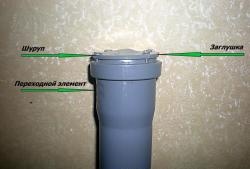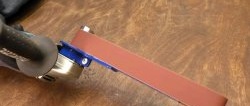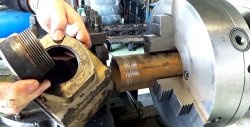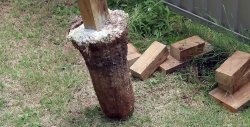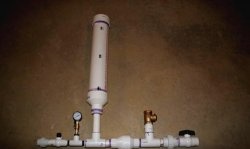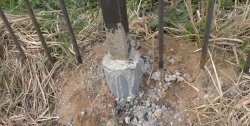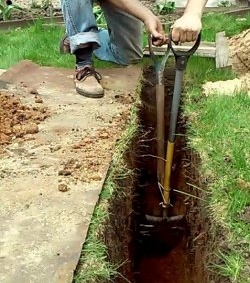DIY pipe drill
When installing a columnar foundation, fence posts and other work related to drilling, a drill of a certain diameter is required. Having electric welding and a grinder, you can make it yourself in a couple of hours from a suitable steel pipe.
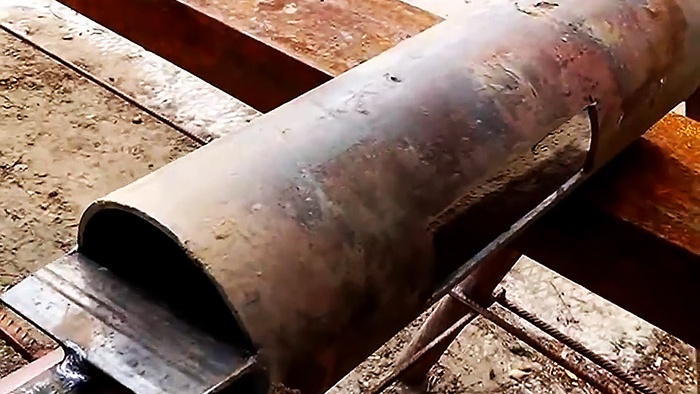
A steel pipe 400 mm long is used as the main cutting part of the drill. It is given a conical shape. To do this, a wedge is cut along the pipe. At the top its width is 20-25 mm, at the bottom it is reduced to nothing. After this, you need to expand the pipe, making it cone-shaped. This is done using two long levers and hammer blows. It is required to make its circumference in the place of the wide cutout corresponding to the diameter of the required hole. In the example, a 128 mm pipe is used. After deformation, its measurements at the edges were 140 mm and 130 mm. Having spread the walls, you need to weld them in a narrow part so that they do not bend further.
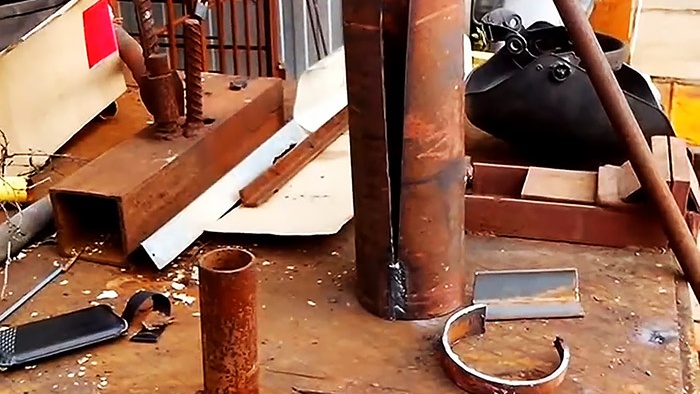
Then, at the top of the pipe, a segment is cut obliquely around the circumference.
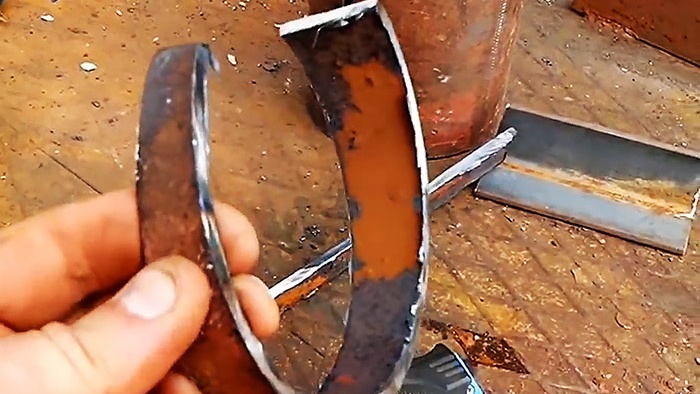
The cut starts from the left and gradually deepens until it converges with the previous longitudinal wedge. The resulting protrusion from the outside to half the wall thickness is cut with a grinder and slightly bent inside the pipe. After this, the notch is scalded by welding. You also need to boil the resulting tip in order to calcinate the metal at the site of future sharpening.
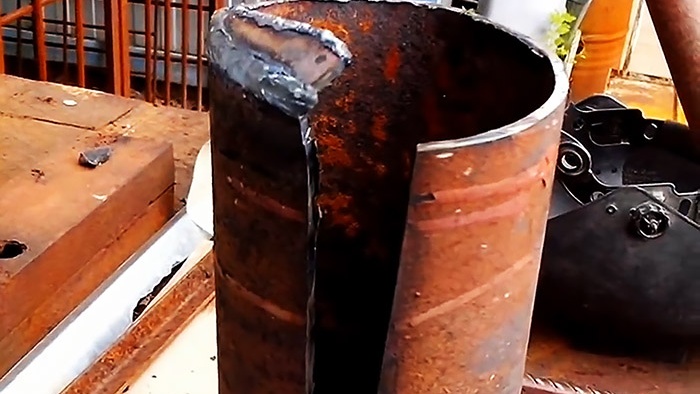
A corner is welded on the back side of the drill blank. A 3/4 inch tube of the required length is welded to it. A narrow handle of the same tube is already welded to it.
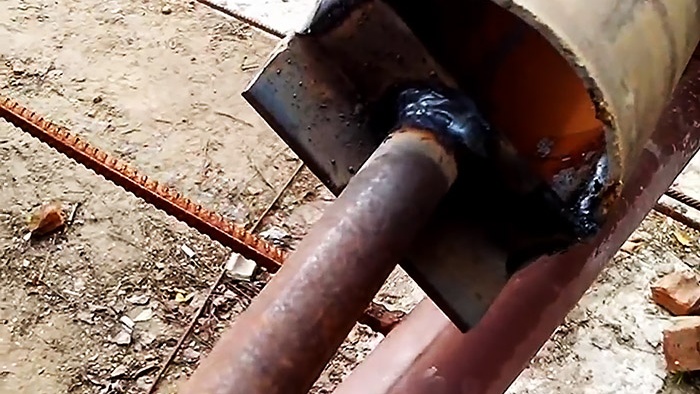
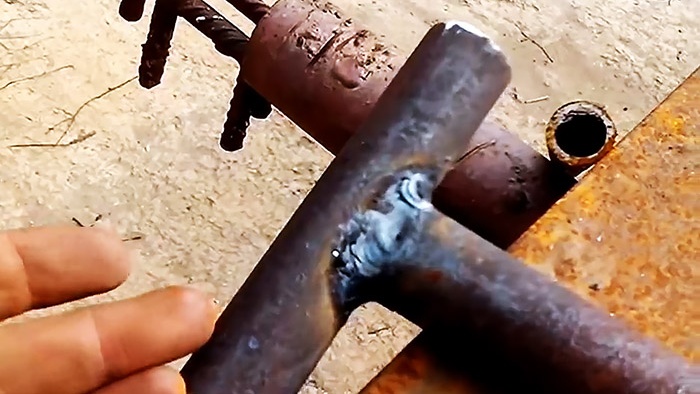
Later, during work, a 20 mm round timber is inserted into it. Since the handle is narrow, the drill can be used close to the walls.
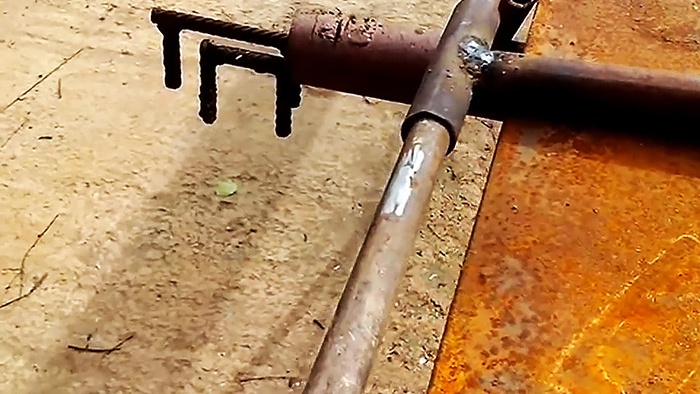
You also need to cut a long narrow window in the main pipe to push out the soil. The tip of the drill is sharpened.
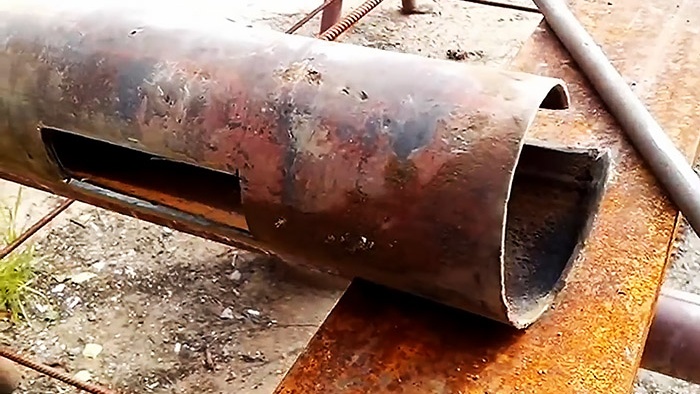
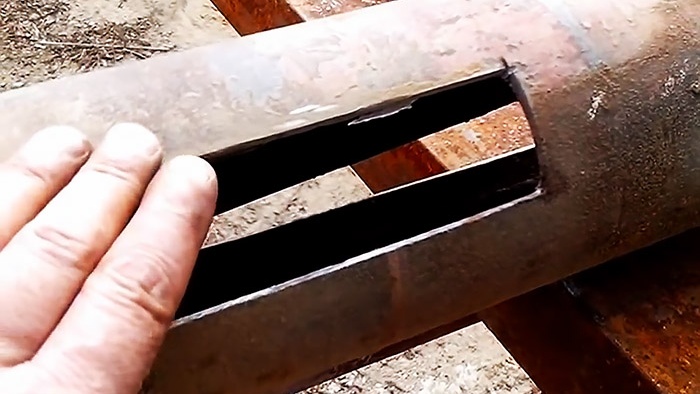
To drill with such a drill, you need to prepare a hole with a depth of half a spade bayonet. Then the drill itself is inserted.
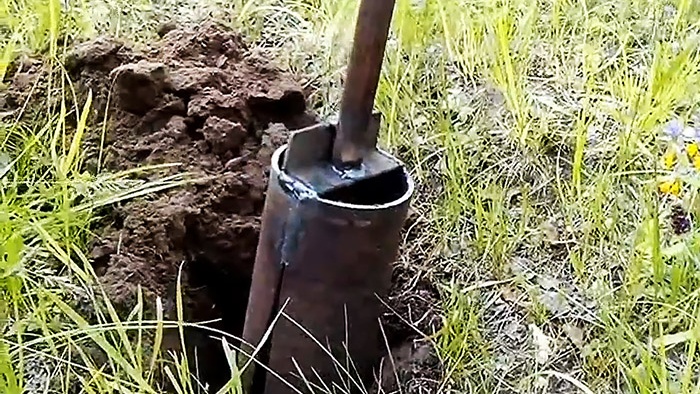
As it sinks, soil is packed into it.
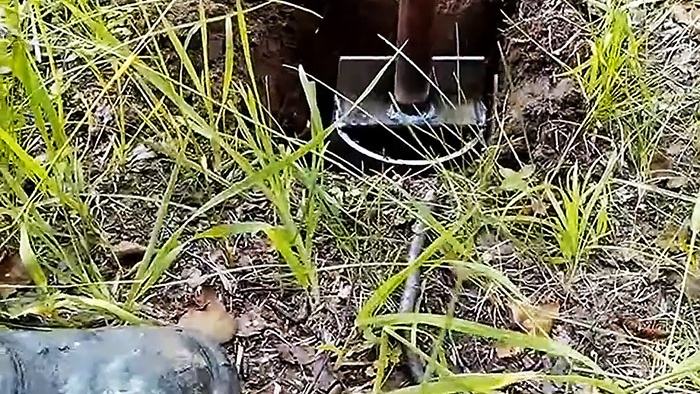
Periodically, the drill is removed, and the earth is pushed out of it with a round piece of wood from the handle inserted through the side window.
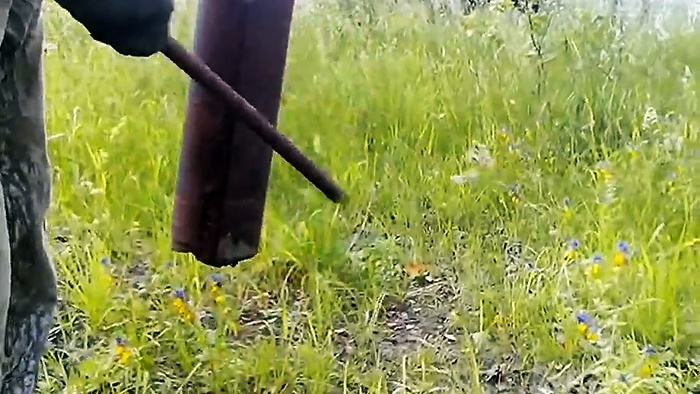
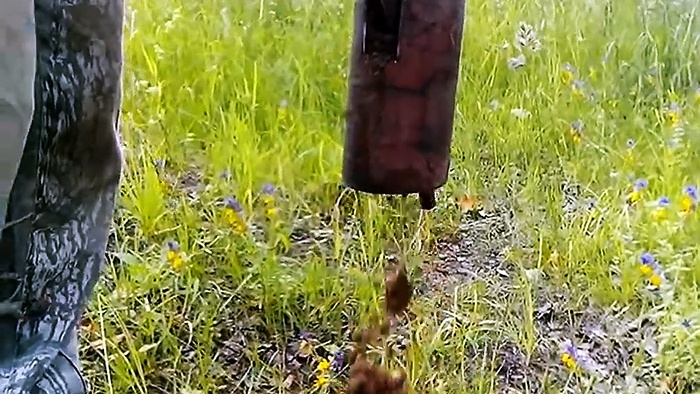
This design eliminates the need to spend a long time cleaning the soil in the hole, as when working with auger drills. The resulting tool copes well with small roots, just like analogues with more massive blades. Moreover, if there are stones in the hole inside the drill pipe, he will not even feel them.

Materials:
- a steel pipe of slightly smaller diameter than the required hole;
- corner 30x30 mm or more;
- 3/4 inch pipe;
- steel round timber with a diameter of 20 mm.
Making a drill from a pipe
A steel pipe 400 mm long is used as the main cutting part of the drill. It is given a conical shape. To do this, a wedge is cut along the pipe. At the top its width is 20-25 mm, at the bottom it is reduced to nothing. After this, you need to expand the pipe, making it cone-shaped. This is done using two long levers and hammer blows. It is required to make its circumference in the place of the wide cutout corresponding to the diameter of the required hole. In the example, a 128 mm pipe is used. After deformation, its measurements at the edges were 140 mm and 130 mm. Having spread the walls, you need to weld them in a narrow part so that they do not bend further.

Then, at the top of the pipe, a segment is cut obliquely around the circumference.

The cut starts from the left and gradually deepens until it converges with the previous longitudinal wedge. The resulting protrusion from the outside to half the wall thickness is cut with a grinder and slightly bent inside the pipe. After this, the notch is scalded by welding. You also need to boil the resulting tip in order to calcinate the metal at the site of future sharpening.

A corner is welded on the back side of the drill blank. A 3/4 inch tube of the required length is welded to it. A narrow handle of the same tube is already welded to it.


Later, during work, a 20 mm round timber is inserted into it. Since the handle is narrow, the drill can be used close to the walls.

You also need to cut a long narrow window in the main pipe to push out the soil. The tip of the drill is sharpened.


To drill with such a drill, you need to prepare a hole with a depth of half a spade bayonet. Then the drill itself is inserted.

As it sinks, soil is packed into it.

Periodically, the drill is removed, and the earth is pushed out of it with a round piece of wood from the handle inserted through the side window.


This design eliminates the need to spend a long time cleaning the soil in the hole, as when working with auger drills. The resulting tool copes well with small roots, just like analogues with more massive blades. Moreover, if there are stones in the hole inside the drill pipe, he will not even feel them.
Watch the video
Similar master classes
Particularly interesting
Comments (1)

